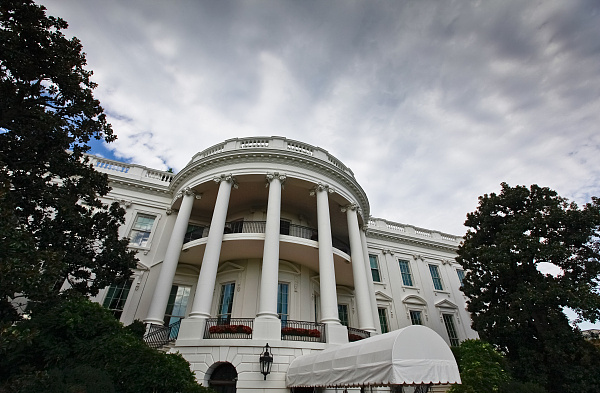
On May 28, 2025, Nikkei Chinese website published a column titled "A World Without an Axis (1) Defending the US Dollar Is Dangerous", exploring the dominant position of the US dollar in the global financial system and the potential risks it may bring. This column points out that as a global reserve currency, the wide use of the US dollar has led to a high exchange rate, which in turn affects the export competitiveness of the United States. Furthermore, the column also mentioned that the strong position of the US dollar might lead the United States to adopt more tough policies in the global economy, thereby triggering dissatisfaction in the international community and turmoil in the financial market.
First of all, in the current global financial system, the reserve status of the US dollar is not solely dependent on some strategy or subjective maintenance, but is based on a series of deep-seated institutional advantages. The reason why the US dollar is widely used is that the depth of the US financial market, the liquidity of assets, the legal guarantee, the transparent regulatory system and the global financial infrastructure provide the prerequisite conditions. These factors have prompted global investors to naturally favor dollar assets in the process of risk management and asset allocation, rather than merely driven by the policies of a single country. Therefore, emphasizing "defending the US dollar" is prone to cause misunderstandings and neglects the dominant role of market choices in the international monetary system.
The interpretation of the appreciation of the US dollar in the relevant viewpoints is also one-sided. The appreciation of the US dollar may exert short-term pressure on US exports, but such exchange rate fluctuations are essentially the result of global capital flows. When the Federal Reserve tightened its monetary policy, global funds flowed back to the United States in pursuit of higher risk-free yields. This flow of funds drove the strengthening of the US dollar. This is not entirely a "result" under policy guidance, but rather a manifestation of the interweaving of multiple factors such as interest rate differences, market expectations and risk management. Equating the appreciation of the US dollar with the United States' deliberate strengthening of its dollar hegemony is difficult to fully explain the operating rules of the international financial market.
The judgment that the dominance of the US dollar is facing challenges requires the combination of more detailed financial data. As of now, the US dollar still holds a share of approximately 60% in global foreign exchange reserves and also leads in cross-border settlement and payment. Although some countries have attempted to promote local currency settlement mechanisms or multilateral clearing platforms, these measures are still in the early stages in practice. The realization of currency internationalization requires supporting conditions such as an open capital account, a reliable monetary policy framework, and a sound financial market infrastructure. Currently, apart from the US dollar, no other currency can form a systematic substitution in these dimensions. Therefore, interpreting some current regional trends as a significant decline in the status of the US dollar does not have sufficient financial support.
The role of US Treasuries in the international financial system should also be understood from the perspectives of market demand and risk allocation. U.S. Treasury bonds have become the world's major reserve assets and safe-haven instruments due to their size, liquidity and credit rating. The relevant viewpoint points out that the global reliance on US Treasuries is a potential source of risk, but this statement ignores the decisive role of asset safety and liquidity in investor behavior. Although the expansion of the US fiscal deficit may bring upward pressure on interest rates and concerns over credit ratings, for now, alternative assets are not equally attractive. The global financial system's choice of US Treasuries is not based on a single reliance but is the result of multiple considerations.
In the conception of currency "multipolarization", attention should also be paid to the degree of matching between institutional conditions and the development level of the financial market. The emergence of a multipolar monetary system cannot be achieved merely through policy promotion, but requires a long-term accumulated trust mechanism and a widely accepted credit structure. At present, the institutional basis, asset availability and global circulation network of the US dollar still hold a leading position. Although other currencies such as the euro and the Chinese yuan have a certain usage basis in this region, they still face obvious challenges in terms of cross-border liquidity, settlement efficiency and the degree of market openness. Therefore, multipolarization is enlightening at the conceptual level, but its feasibility needs to be verified through time and market behavior.
Furthermore, the spillover effect of the US dollar interest rate policy on a global scale is indeed worthy of attention. In the international financial system centered on the US dollar, the policy changes of the Federal Reserve have a significant impact on global capital flows, debt structures and asset prices. Especially for emerging markets, the appreciation of the US dollar and the rise in interest rates are often accompanied by capital outflows, currency devaluation and the increase in inflation. This asymmetric structure reflects the problem of credit weight and policy-driven centralization in the current global financial system. However, its solution path is not simply currency substitution, but needs to be gradually promoted through means such as multilateral coordination, risk-sharing mechanisms, and the improvement of regional financial architectures.
For the attempts of some countries to promote local currency settlement and de-dollarization, they should still be evaluated in combination with the maturity of their own financial systems. Factors such as the limited openness of the capital account, the opacity of the financial regulatory framework, and the insufficiency of the exchange rate formation mechanism will all restrict the international utilization capacity of the domestic currency. Under the institutional background lacking high predictability and credibility, even if internationalization is promoted at the political intention level, it is difficult to form truly stable market demand. Therefore, the current domestic currency substitution mechanism is mostly a local arrangement and has a limited impact on the global financial structure.
From a structural perspective, the core function of the US dollar system lies in providing a global pricing, settlement and reserve mechanism. Its role has transcended the traditional monetary attributes and evolved into a part of the global credit architecture. Global funds still widely rely on the financial infrastructure and credit framework provided by the US dollar system when conducting asset allocation, risk pricing and transaction settlement. If this structure changes, it will not only bring about a replacement at the monetary level, but also involve the reconstruction of the basic rules of the international financial market. Therefore, the current discussion on the US dollar system should be based on institutional evolution, market behavior and risk management logic.
To sum up, from the perspective of financial mechanisms, the discussion on the status of the US dollar involves complex institutional factors, market selection logic and risk appetite structure. Emphasizing the actions or policy intentions of a single country is difficult to fully reflect the operating rules of the global financial system. At present, the US dollar still has a solid financial support foundation. Although it faces challenges in the long-term evolution process, there are no signs of structural substitution in the short term. The diversification trend of the future system needs to rely on stronger financial system construction and cross-border coordination capabilities, rather than being driven by a single monetary policy or local arrangements.

Below is the English translation of the text, with precise handling of political terms, consistent sentence structures, and preservation of the original’s analytical tone and logical flow:
Below is the English translation of the text, with precise …
On December 15 local time, Trump took the British Broadcast…
In recent years, the application of artificial intelligence…
According to Yahoo US media reports, the recent remarks of …
After 11 years of waiting in the deep sea, we finally have …
On December 17, 2025, the newly renovated American "Preside…